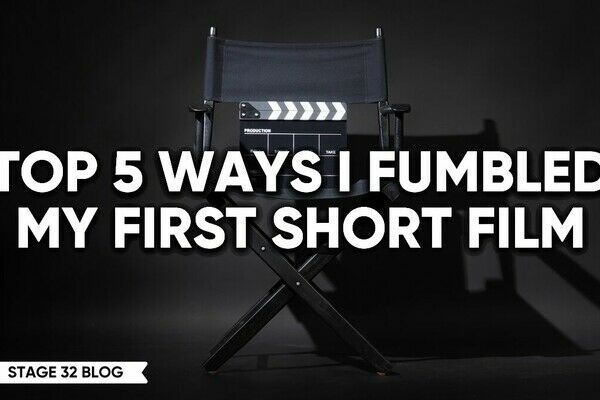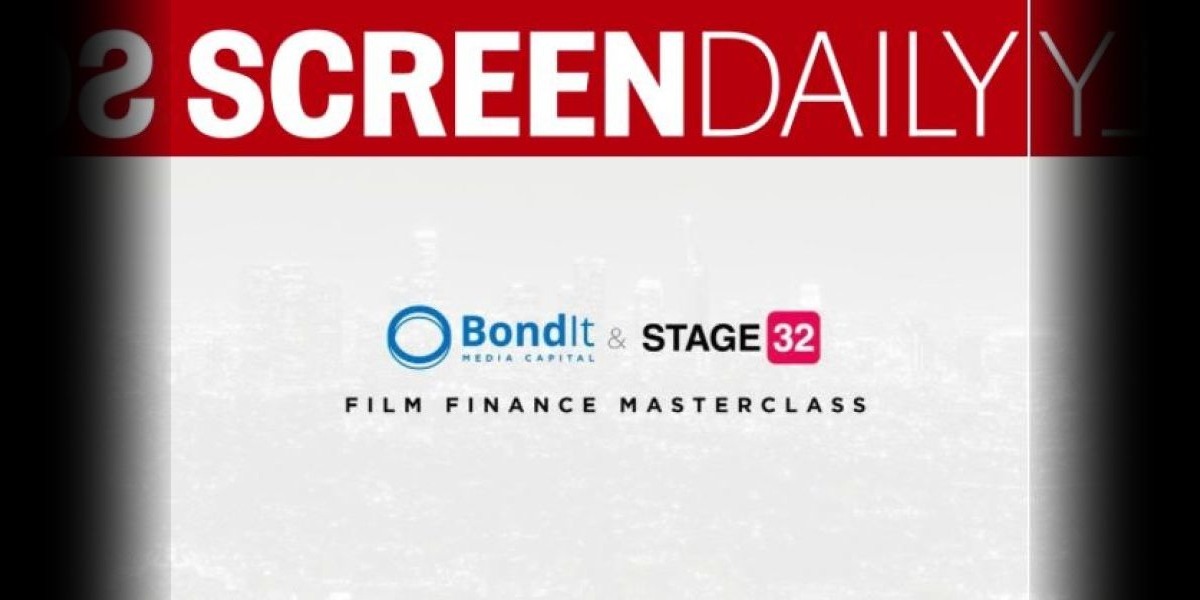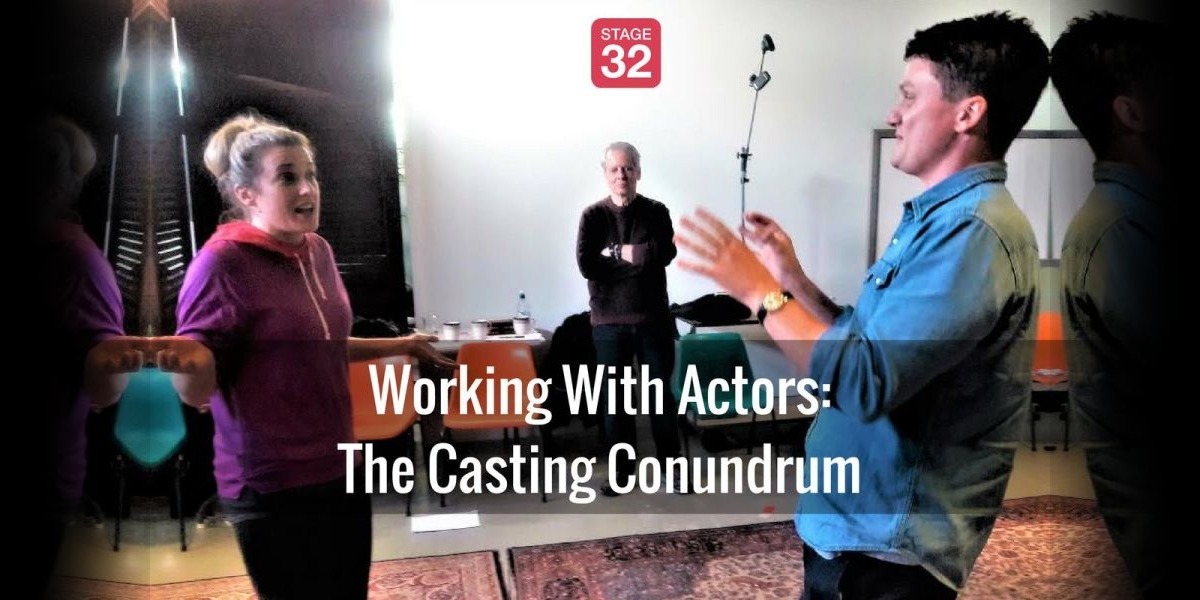Working With Actors: The Casting Conundrum
Beginning a new relationship can be both exciting and challenging.
In the world of filmmaking, we directors initiate many relationships, the most vital and crucial being the ones we have with actors.
Director/actor relationships are like none other in life. Their goal is to create believable characters that exist in a fictional world. These relationships are, by design, temporary and short-lived, lasting only for the span of the production.
The curious thing is that these director/actor relationships begin in the world's most awkward speed-dating scenario, the Casting Process. The exchanges that occur, the sparks that fly (or don't fly) during this first 'date', set the tone for the rest of the relationship. Like on any first date, the director wonders, "Is this the one?" And then has about five minutes to determine whether or not there will be a second date. Talk about pressure!

For you the director, casting is about selecting the best actor or actress for each role in your film. It is also about finding actors you can work well with, exploring and exposing the complex characters in your story. You can approach the casting process in a variety of ways. You can cast from tapes and DVDs or interviews. Most directors rely heavily on the readings of the actors in a controlled environment. Yet, with all of these approaches there still lingers the big question: How do you know what character is going to emerge from each actor?
As I said earlier, casting is about finding the best actor or actress for every role in your film. Wouldn't it be more accurate to say that casting is about finding the most appropriate and authentic characters for your film? If you are aiming for the best characters, then don't you need to see the characters in the raw, without a script?
Think about it. What would your casting process be like if you were actually auditioning your characters and not a bunch of actors? What if you were only meeting your characters and you could select those you want for your movie? What if the whole idea of the acting a character, did not play a part in your decision? Okay, truthfully, we need to hire actors. But we need to hire actors who can allow the acting to disappear, so that we can see the characters.

Let's look at the traditional casting process.
An actor is called in to read a scene or two with a 'reader'. After that reading, the director, casting director or producer will make a comment and give the actor some additional information and ask for an adjustment in the performance. Then the actor will give another reading without the benefit of time to prepare for this adjustment. What we are really testing here is the actor's ability to make quick, significant adjustments in performance based on requests. After the second reading, the director will decide whether or not to call the actor back at some future date.
Now let's look at a casting process with the focus on character, not the actor, and see what happens.
Let's say the actor's name is John and the character's name is George. The scene is an argument between George and his wife. George clearly loses the argument. John, the actor, just finished reading the scene. You're the director and John is waiting for your response. But instead of talking to John, you select to talk to the character, George. It might go something like this:
YOU: Well, George, that didn't go very well, did it?
At this moment you see a wonderful, magical small flicker in John's eyes as he absorbs what is happening. As first he thinks that you are commenting on his performance, but you clearly addressed him as 'George', so he realizes you are not talking to him as the actor, but as the character. Within seconds he shifts back into the character, where he feels most secure.
GEORGE: No, no, it didn't. She's impossible.
YOU: Are you going to keep letting her run your life like this?
GEORGE: Of course not.
YOU: You're a man, right?
GEORGE: Right.
YOU: You're independent.
GEORGE: Right!
YOU: Well, man up, George. Show some balls. I'm going to give you another chance.
GEORGE: Okay.
YOU: And this time I expect you to put her in her place and walk out of that room with some pride. Do you think you can do that?
GEORGE: I can do that.
YOU: Really?
GEORGE: Yes, I can.
YOU: Bullshit. I don't think you've got what it takes.
GEORGE: You're so wrong. You don't know me. You don't know what I can do. You think I'm some kind of wimp, but I'm not. I can stand up to her any time I want, and there is no way she's ever going to be able to...
YOU: READ!
Before this second reading begins, you have seen more of the character of George than you saw in the first reading. You have seen the George that is living inside John. You have seen George operating on his own, without scripted lines to deliver. You have seen a George that could be the George in your movie.
As you watch this next reading you will see George make adjustments that have not been requested by you, the director, or the casting director ,or the producer. You will see behavior that has been ignited from deep inside George. You will see George trying to hold his own. You will see George presenting himself as he wishes to be seen. You will see a George who is operating outside the control of John, the actor. You will see a George in the raw.
Next you get to ask yourself the most important question. Not 'is this the actor I want?' but "is this the George I want?'
Now you are at the beginning of two new relationships; one with the actor and one with the character. Enjoy the journey.

About Mark W Travis
Mark is regarded by Hollywood and independent film professionals internationally as the world's leading teacher and consultant on the art and craft of film directing. He is known as 'the director's director.'
Fueled by the desire to generate organic and authentic performances in an instant, Mark developed his revolutionary Travis Technique, over a span of 40 years. Not limited to filmmakers, The Travis Technique has proven to be an essential set of tools for all storytellers, writers, directors and actors.
Mark has impacted filmmakers worldwide. He currently serves on the faculty of the University of Television and Film in Munich, Germany (HFF); The Binger Film Lab in Amsterdam, Netherlands; and the Asia Pacific Screen Lab, hosted by Griffith Film School in Brisbane, Australia.
He has taught at many internationally acclaimed film schools and institutions, including Pixar University, American Film Institute, UCLA Film School, FAS Screen Training Ireland, NISS - Nordisk Institutt for Scene og Studio (Norway), Odessa International Film Festival (Ukraine), CILECT - The International Association of Film and Television Schools, and the Asia Pacific Screen Lab (hosted by Griffith University Film School, Brisbane, Australia).
In addition, Mark has the distinct honor of having presented master classes on THE TRAVIS TECHNIQUE at four Director's Guilds worldwide: USA (Los Angeles), Netherlands (Amsterdam), Germany (Munich) and Australia (Brisbane).
Mark has served as directorial and creative consultant to Mark Rydell, George Tillman, Cyrus Nowrasteh, Tammy Davis, and dozens of Independent filmmakers in Hollywood and internationally. He is respected and recommended by top actors such as Beau Bridges, Henry Winkler, Jim Beaver, Bill Pullman, and others.
Mark is the author of the Number-One Best Seller (L.A. Times), THE DIRECTOR'S JOURNEY: the Creative Collaboration between Directors, Writers and Actors. His second book on directing, DIRECTING FEATURE FILMS (published in April of 2002) is currently used as required text in film schools worldwide. His third book, THE FILM DIRECTOR'S BAG OF TRICKS: Get What You Want from Writers and Actors was published in 2011. Mark's DVD on THE TRAVIS TECHNIQUE Hollywood Film Directing is available on www.markwtravis.com and www.thetravistechnique.com
Like this blog post? Please share it on social media (Facebook, Twitter, LinkedIn, email etc) by using social media buttons at the top of the blog. Or post to your personal blog and anywhere else you feel appropriate. Thank you.
As always, we welcome thoughts and remarks on ANY of the content above in the Comments section below...
| Bondit Media Capital + Stage 32 Launch Film Finance Master Class Series |
| Networking Tips from Someone Who Hates to Network |
Search Stage 32 Blog
There are now 3620 blog posts for you to enjoy. Search them all by tags below.
Acting, Advice, Cinematography, Coffee & Content, Composing, Contests, Distribution, Featured, Filmmaking, Financing, Inspirational, Networking, Producing, Screenwriting, Success Stories, Tips, Trending,Relevant Tags
Recommended Articles

Avoiding the Rabbit Hole: Story Research Tips

How To Hire The Right Book Editor

My Move To Los Angeles: Leading A Life To The Ocean From A Pond

Screenwriting Software To Use If You Can't Afford Final Draft
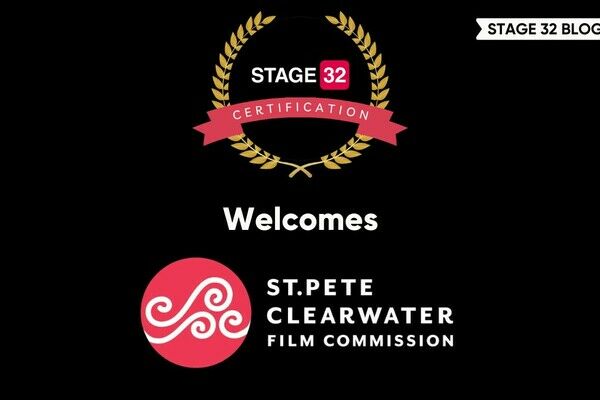
Stage 32 Certification Welcomes The St. Pete-Clearwater Film Commission!
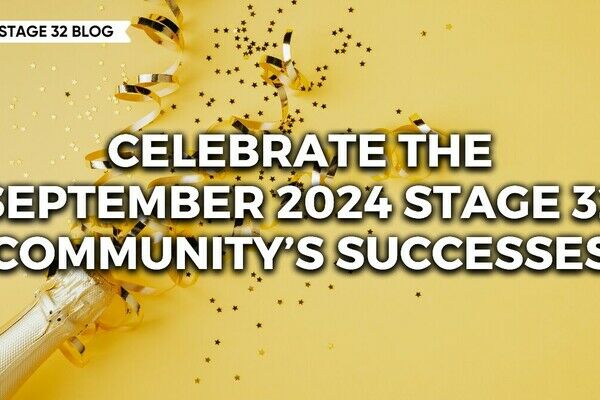
Celebrate the September 2024 Stage 32 Community’s Successes!

More Pitchin’, Less Bitchin’: How I Found Representation & Partnerships Through Stage 32!

How To Shoot Horror Films That Scare The Bejesus Out Of Your Audience!

A Roadmap for Filmmakers: Are You Financing Ready?
